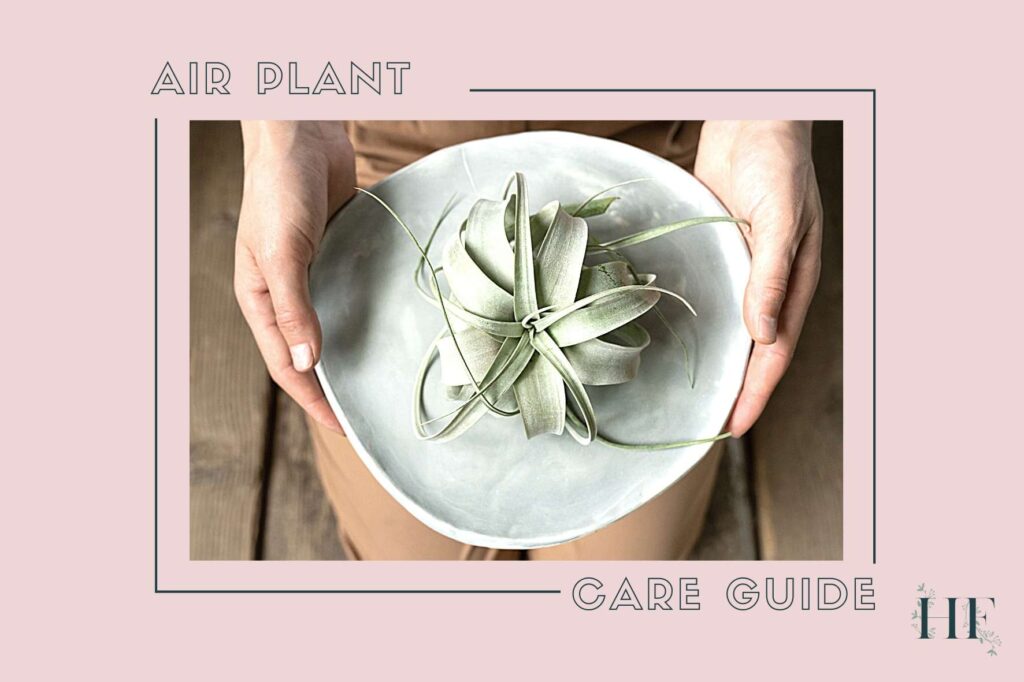The ornamental appearance of air plants and their colourful, exotic-looking flowers make them an attractive addition to many houseplants lovers.
There are over 650 species of air plants that come from a range of different habitats, which means their needs and care will vary significantly depending on the species. That’s why air plant care is not “one size fits all.”
One of the key determining factors in the type of care and environment your Tillandsia needs is whether it is a Mesic or Xeric air plant – or somewhere in between.
That being said, here are 8 steps you can follow to grow air plants according to their requirements. But before that, let me address a frequent question among houseplant lovers:
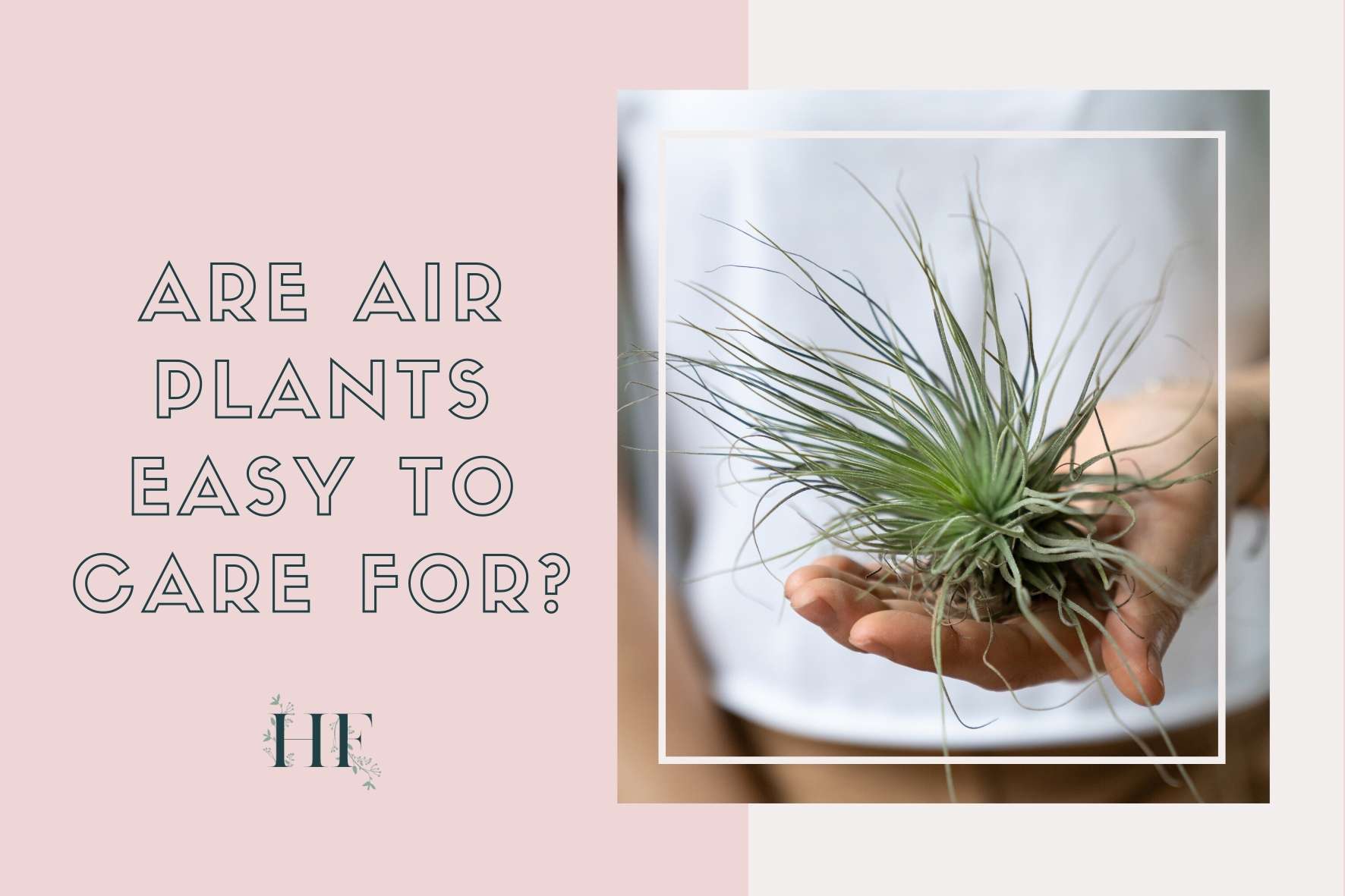
Are Air Plants Easy to Care for?
With the low maintenance requirements that they are advertised for, it’s no wonder they are quickly growing in popularity as a houseplant. However, air plants are considered moderate to difficult to care for.
Air plants, or Tillandsia, are evergreen, perennial flowering plants that belong to the Bromeliaceae family. They don’t require soil and generally do not need frequent watering, which gives them the reputation of low maintenance.
However, the lack of knowledge about air plant requirements for light, temperature, watering and air circulation, pose a challenge to keep them growing healthy.
That’s why, although air plant maintenance (or upkeep) is lower compared to other houseplants, it can be challenging to know how to keep air plants alive since their care differs from non-epiphyte houseplants.
| AIR PLANT FACTS | |
|---|---|
| Common name | Air plant |
| Botanical name | Tillandsia |
| Group | Tropical epiphytes, lithophytes and aerophytes |
| Species | Over 650 species |
| Flowering time | Spring to autumn |
| Planting time | All year |
| Hardiness | Tropical |
| Difficulty | Moderate to difficult |
How to Care for an Air Plant in 8 Steps
Here’s what you need to know about how to look after an air plant:
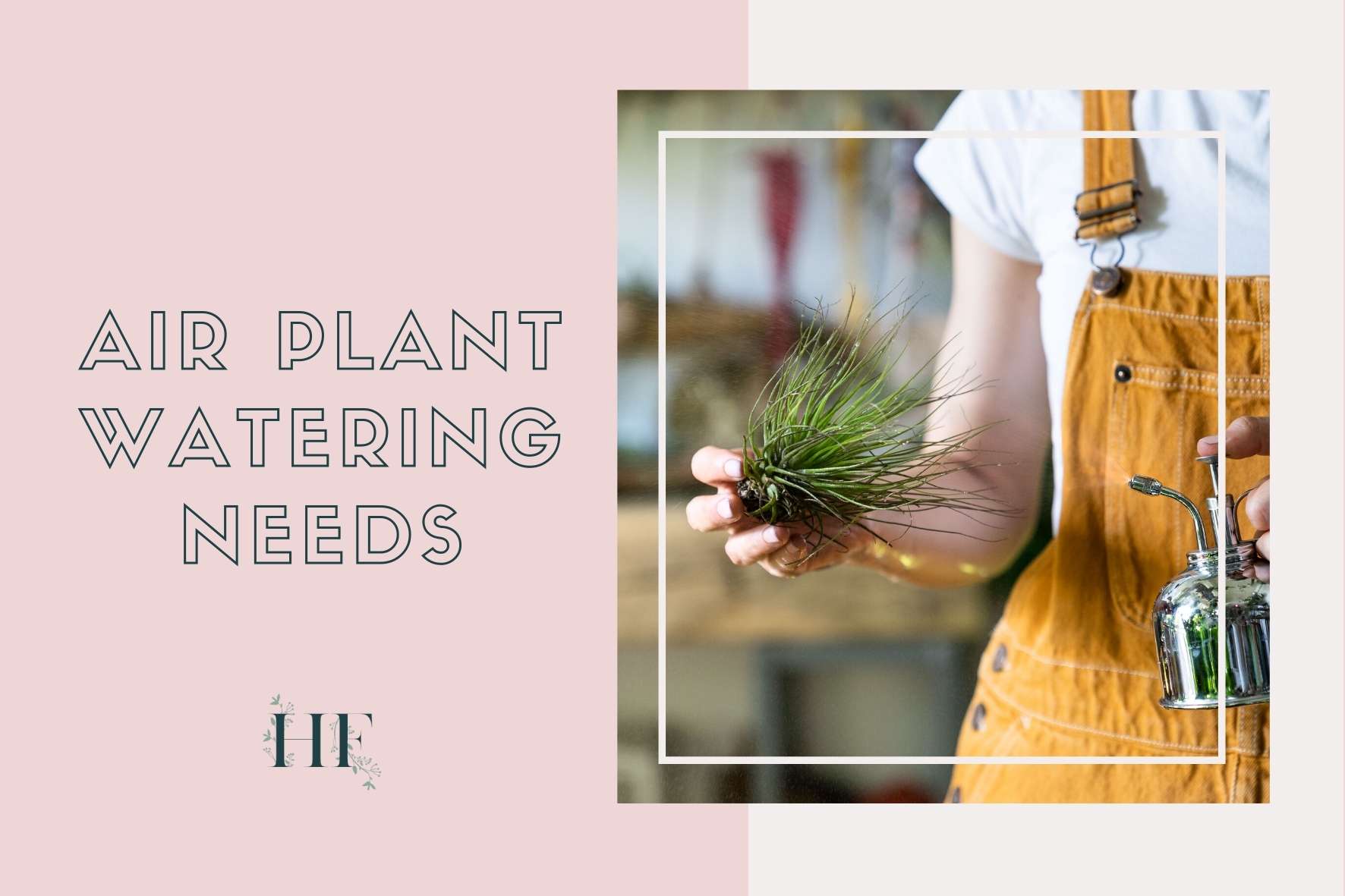
1) Watering According to 5 Important Factors
When and how often you water air plants will depend on 5 factors:
- Climate group (mesic or xeric).
- Local climate (dry, humid, etc.).
- Seasonality (spring, summer, autumn or winter).
- Environment (light, air, temperature and humidity).
- Display (glass terrarium, mounted, hanging, etc.).
As a general guideline, water your air plants once a week. If the air in your house is particularly dry, water your air plant more often (every five days). In a humid environment, water it every ten days.
Look at your air plant to know if it needs water:
- Curled leafs indicate underwatering or dehydration.
- Brown and soggy leaves is a sign of overwatering.
There are two watering methods: soaking and dunking (especially for wood mounted air plants). Soak them (fully submerged) in a bowl of water for 20 minutes to 1 hour. Misting air plants once a week is helpful but is not a substitute for soaking. You can use a glass mister to do so.
Insider Tip: after watering, always let your air plants dry for 4 hours before putting them back on display. You can put them upside down or on their side, in a shadowy area that has good air circulation.
The type of water you use matters. The best type of water to water air plants is rainwater since it’s richer in natural minerals and nutrients. Otherwise, you can use spring water or filtered water. The water temperature should be lukewarm too.
Climate Factor
The natural habitat of Tillandsias shows that these plants thrive in warm and humid conditions. Air plants have evolved from two distinct climate groups: mesic and xeric.
- Mesic Air Plants: They prefer moderate humidity and frequent watering since they are used to regular rain, fog, and mist of tropical rainforests. You can recognize them by the smooth dark green leaves that have less visible trichomes.
- Xeric Air Plants: They thrive in a drier climate with high humidity levels and require less watering since they grow exposed to the sun in deserts and cliffs. They have fuzzy grey or light green leaves with abundant trichomes.
Read also: Air Plant Watering Guide – How to Water and Mist Tillandsias.
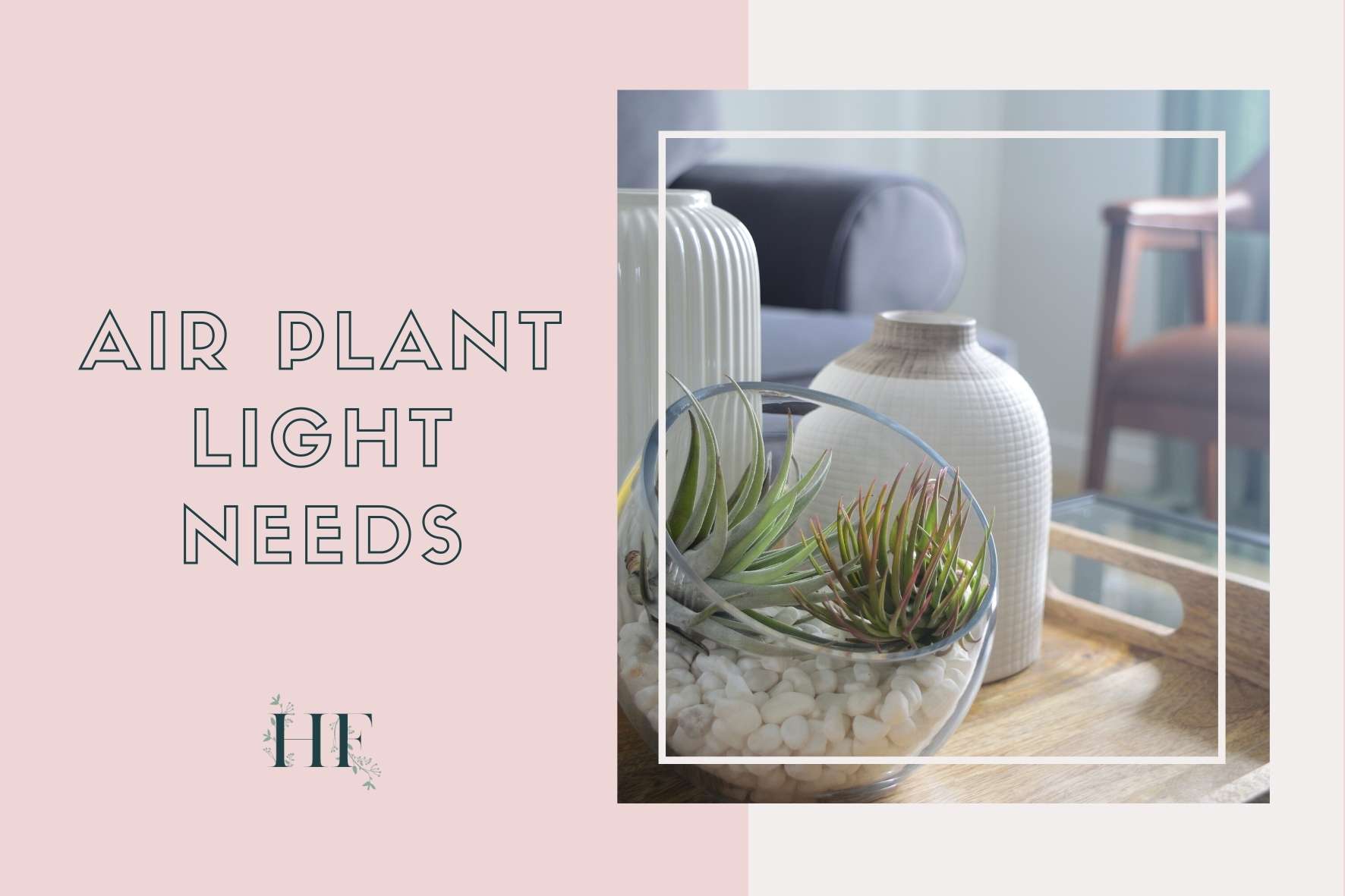
2) Light Source Proximity that Promotes Growth
Air plants need light to live and they thrive in bright, filtered light. How much light an air plant needs depends on its type: the mesic type prefers indirect sunlight and the xeric type prefers bright direct sunlight.
When keeping air plants indoors, place them close to a bright window or in a room that has plenty of natural light. Xeric air plants can stay on the windowsill. But keep mesic air plants away from direct sunlight, but not too far from the light source either.
Direct sunlight will dehydrate plants quicker (for instance, sitting next to a hot window), and it can lead to sunburn.
Insider Tip: As a rule of thumb for indoor plants, don’t place them more than 10 feet (3m) from a window; preferably from a west, east, or south-facing window since north-facing windows get less light and get colder in winter.
During the spring and summer months, you can take your air plants outdoors. Display mesic air plants in partially shaded areas and xeric air plants can take direct sunlight for half of the day. The latter can also be gradually acclimatised into higher light levels.
Read also: Air Plant Light Guide – How Much Light Do They Need.
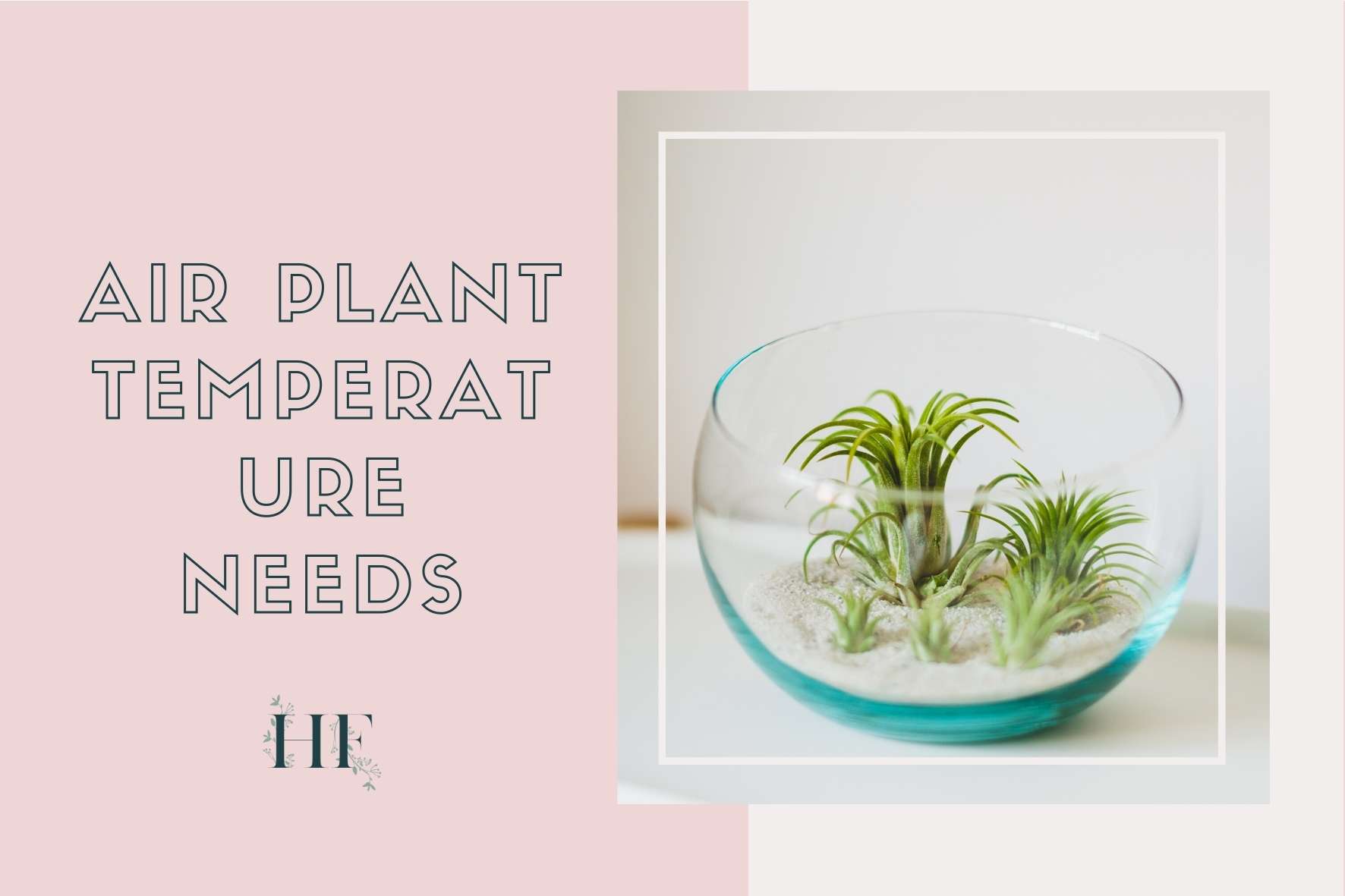
3) Provide a Safe Temperature Range
Keeping your Tillandsias at a safe temperature range and avoiding suddenly moving them to a spot that’s significantly colder than where they were before is key.
Air plant temperature needs to be 12°C (54°F) at its lowest and 30°C (86°F) at its highest. Tillandsias thrive in warmer temperatures; they can’t survive in the winter frost.
Windows and glass terrariums will increase the temperature around your air plant. Remember that only the xeric type is used to hotter temperatures.
Air plants dry out as a combination of infrequent watering, high temperatures and low relative humidity.
In contrast, too cold temperatures can lead to frost, which is lethal to most air plants (especially the ones that are commercially available, with the exception of Spanish Moss – Tillandsia usneoides). This especially applies if you keep them outdoors.
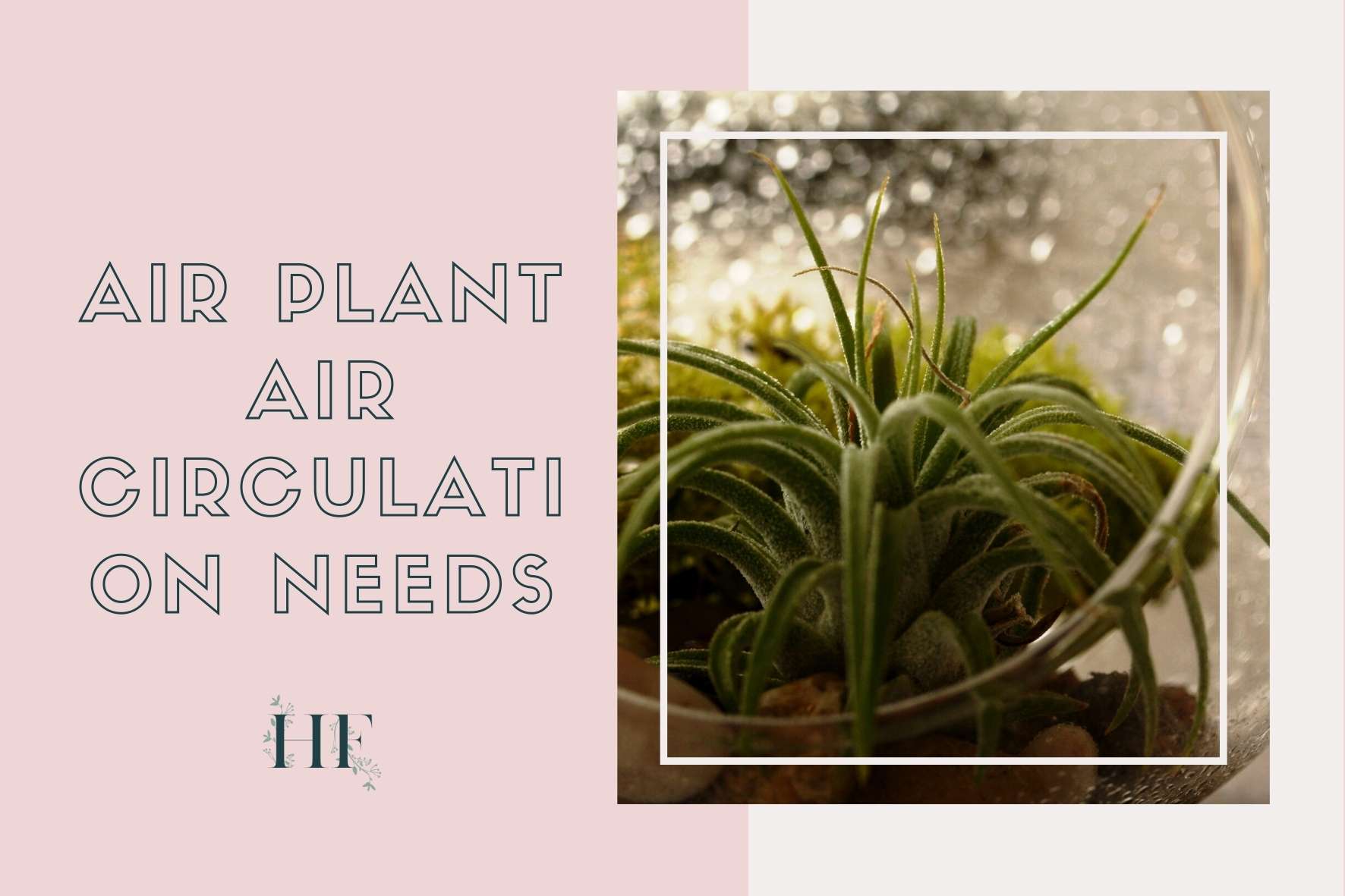
4) Unobstructed Air Circulation is Necessary
Air plants need air circulation, not staleness. The airflow allows these plants to absorb nutrients, dry out after watering and remain healthy. If an air plant doesn’t absorb enough air, it will wither away and die.
Since Tillandsias evolved in sites that all have high airflow, it’s important to provide a well-ventilated location and display.
Enclosed display options like terrariums don’t provide enough air circulation, especially when the opening is small.
Mesic air plants will tolerate less air movement (or ventilation) and a more humid environment. However, xeric air plants need good and unobstructed air circulation.
Read also: 13 Common Air Plant Problems, Pests and Diseases – to keep an eye on signs that indicate that your air plant is distressed.
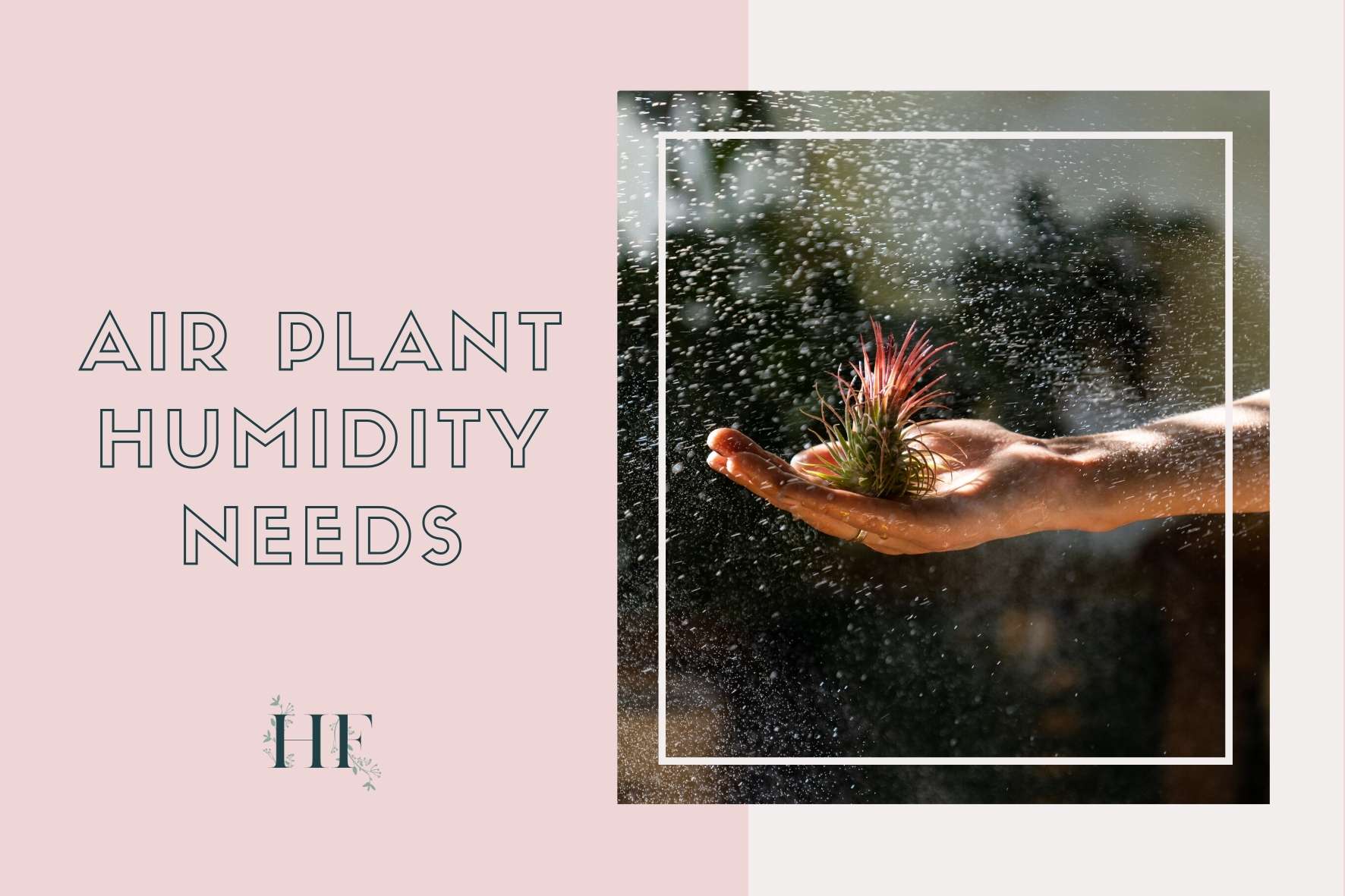
5) Medium to High Humidity Levels
Air plant humidity needs to be between 50 to 70%. Mesic air plants do better in moderate humidity. Xeric types, however, thrive in high humidity climates.
In most homes, the humidity won’t be nearly as high – the average indoor humidity level falls between the 40 to 60% range. This means that there is less water around for the air plant to absorb through air moisture.
That’s why you need to mist air plants and also soak them as mentioned in Step 1. Tillandsias that are kept indoors won’t survive without supplemental watering.
You can measure both the temperature and humidity of your home by using a hygrometer – that’s the one I use.
Read also: Air Plant Environment – Light, Temperature, and Humidity Needs.
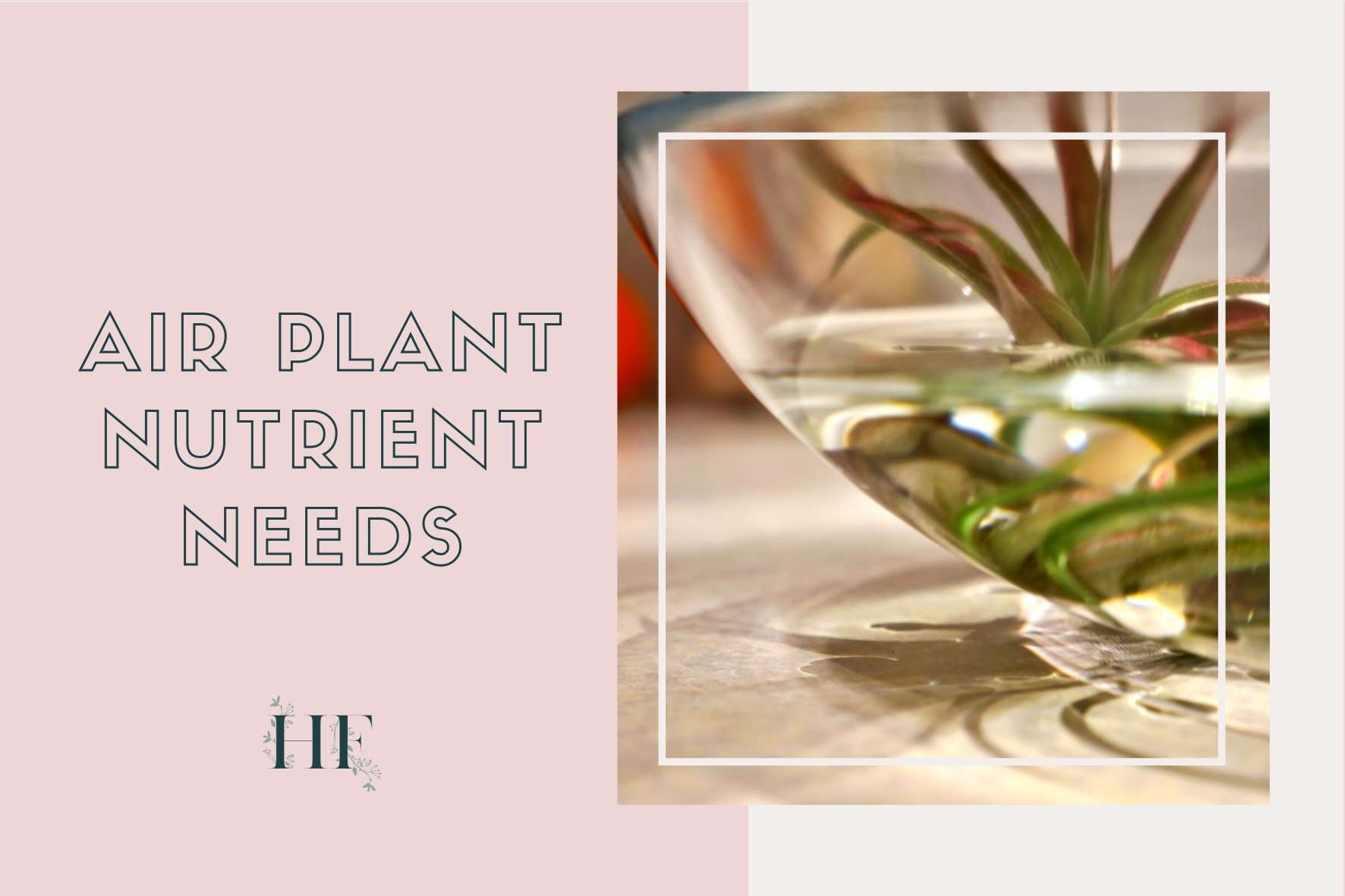
6) Feeding Nutrients Helps Them Grow and Bloom
Air plants need nutrients to live (minerals like nitrogen, phosphorous, and potassium). In their natural habitat, they use the trichomes in their leaves to get nutrients from the air, rainwater and sunlight.
Although it’s not necessary to fertilize air plants, as houseplants they might need extra nutrients to thrive like they do in the wild. Fertilizers encourage air plant growth, bloom cycle, and offset (pup) production.
Because a regular fertilizer can burn your air plant, when choosing a fertilizer for air plants:
- Use a water-soluble fertilizer.
- Avoid copper, boron, and zinc micronutrients (since can cause toxicity and kill your air plant).
- Choose a non-urea-based fertilizer (because air plants do not need soil to live). Nitrogen should be in the form of ammonium or nitrate.
- Go for a low-nitrogen ratio.
The best option is to go for a Bromeliad, Tillandsia or epiphyte specific fertilizer. Here’s an air plan specific fertilizer that you might want to consider.
Fertilize air plants once a month, especially when blooming, to help with flowering, pup production and seed formation. Dilute the fertilizer to 1/4 of the strength recommended on the label into lukewarm water.
Read also: Air Plant Nutrients Guide – When to Fertilize Tillandsias.
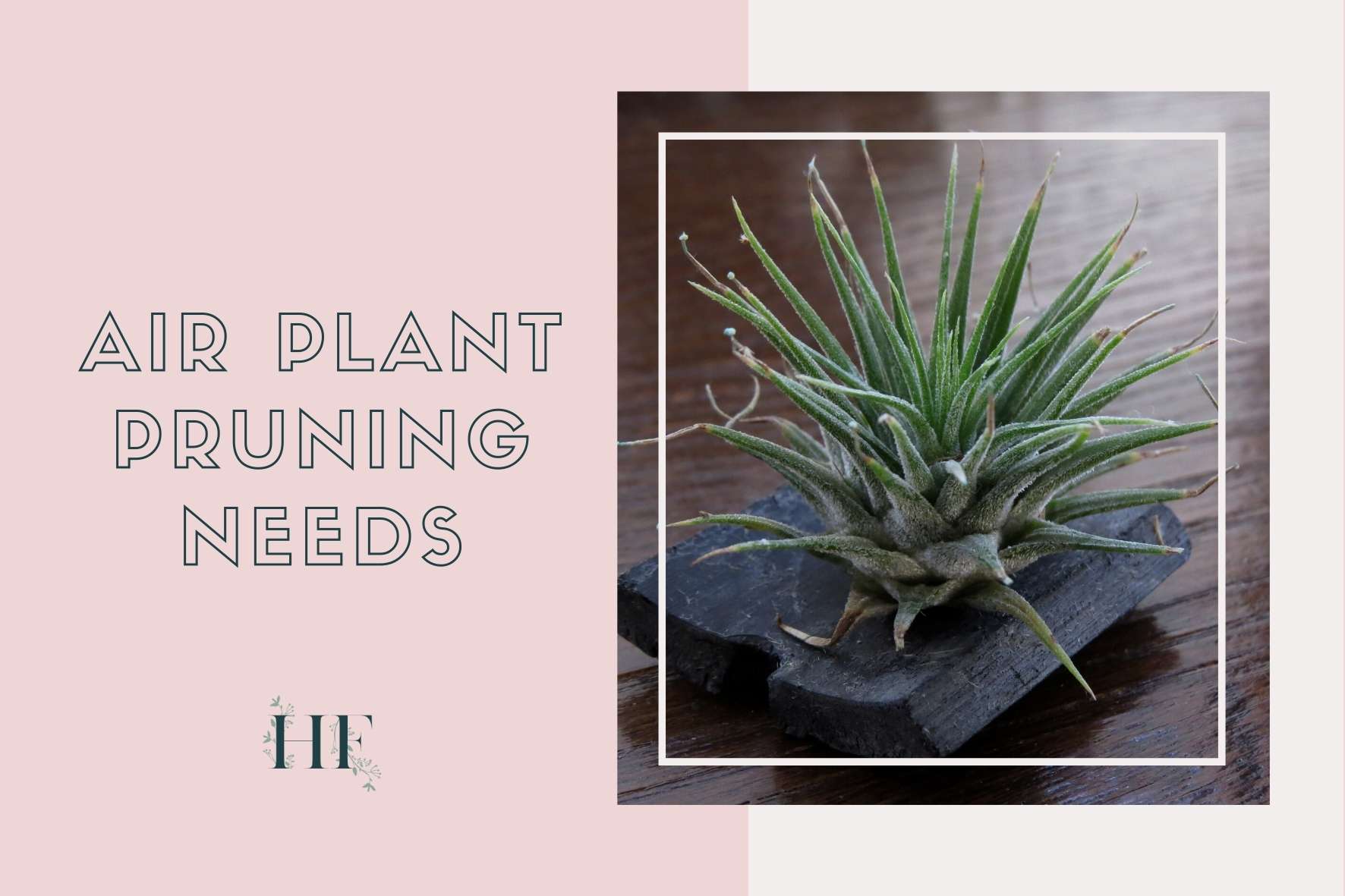
7) Pruning to Encourage Healthy Growth
Air plants need pruning to encourage healthy growth (including new leaves, blooms and pups) and keep pests and diseases at bay.
Trimming air plants consists of removing damaged and dried parts of the plant by cutting them away. You can trim Tillandsia leaves when they are dead, broken or turning brown.
You can find the pruning shears I recommend here.
Also, you can trim the mother plant once it has dried completely, leaving the offsets in situ to grow as a Tillandsia ball.
Read also: Air Plant Pruning Guide – When to Trim Tillandsias.
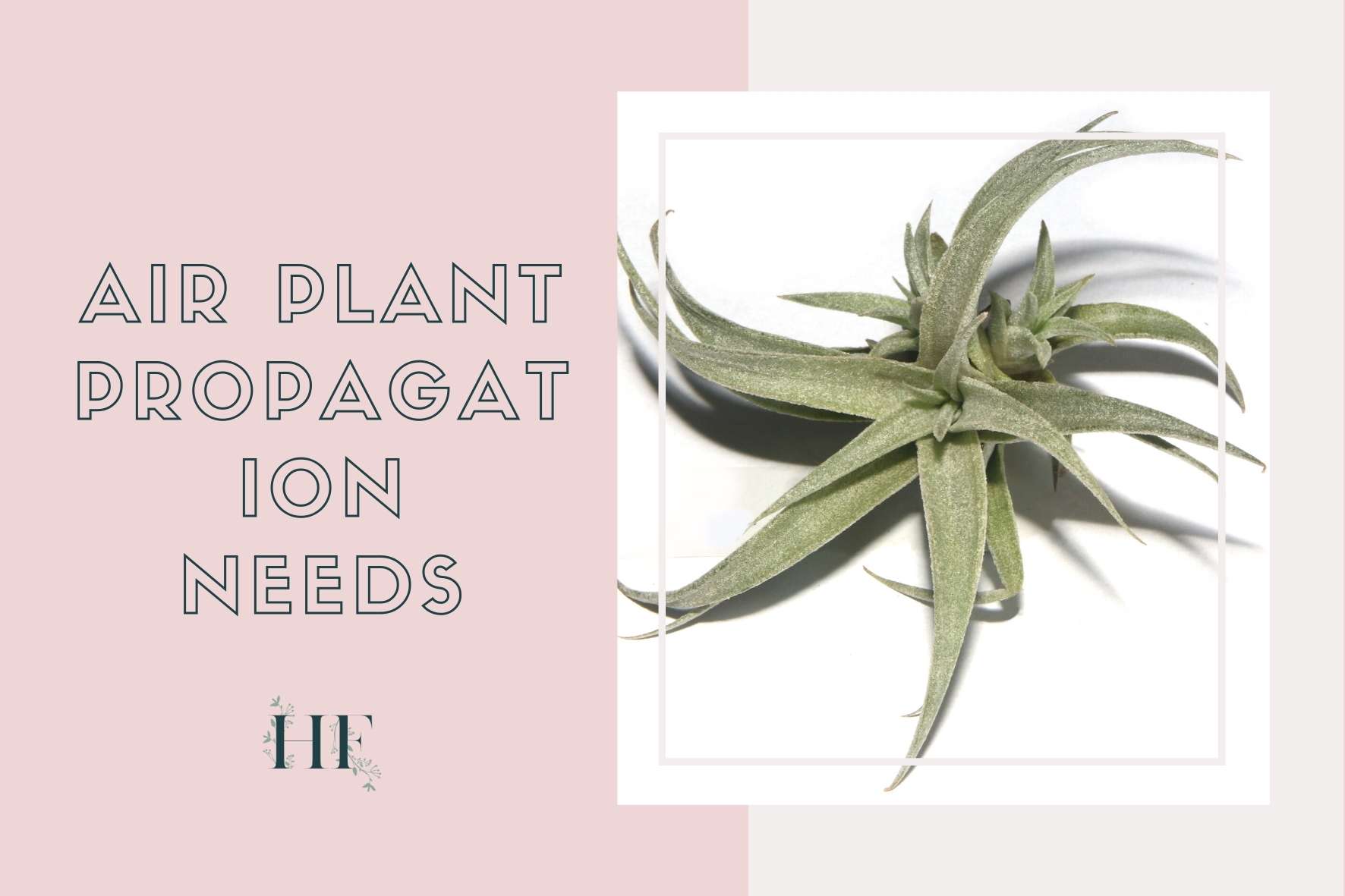
8) Prepare for Propagation (a.k.a. Air Plant Pup Care and Collecting Seeds)
Tillandsias, like other bromeliads, can multiply through pollination and seed formation. This means that you can propagate air plants by division or sowing.
Dividing the pups or offsets from the mother plant is the easiest way to propagate air plants. This is done when the pups are a third the size of the parent plant. Once they have been detached they can be treated as adult plants.
Pup production occurs shortly after an air plant’s first bloom cycle. Depending on the species, an air plant can take 6 months to several years to produce its first bloom.
Although according to the type of Tillandsia, it will produce offsets before, during or after flowering, producing offsets, this process is linked to its blooming.
Alternatively, you can also grow air plants from seeds. Propagation by sowing the seeds from a pollinated Tillandsia is a more complex process but it’s possible.
Read also: Air Plant Propagation Guide and Pup Care – for a step by step guide on propagation (includes both division and sowing) and air plant pup care.
These are the steps on how to grow an air plant, according to type and needs. Feel free to leave a comment if you have any questions.

